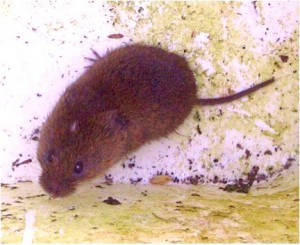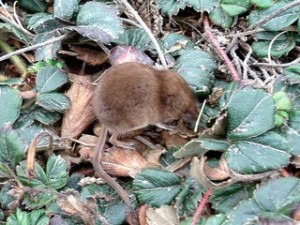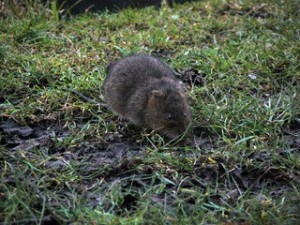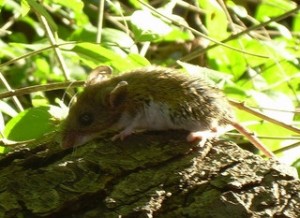Rodents
Oregon Vole
Also known as Creeping Vole, this vole is found in British Columbia, Oregon and Washington. The Oregon Vole is from the order Rodentia. The vole has dense, dark brown or black fur with some yellowish hairs. This vole averages in 5.5-6.5 inches in length.
Creeping Voles feed on grasses and forbes and some underground fungi. They display yearlong activity and are mainly nocturnal. A typical vole lifespan lasts 3-6 months, rarely exceeding 12 months. It is estimated that as many as 88% of voles die within their first month. Predators include snakes, hawks, owls, coyotes, and foxes.
Likely the most common of the four shrew species found in the Lower Mainland. A shrew is not a rodent; in fact they are more closely related to moles. Shrews have an appearance similar to a mouse with an extended nose and very small ears. In the summer, the coat is a cinnamon brown colour, and in the winter turns greyer. Shrews generally have poor vision but have exceptional senses of hearing and smell. A typical shrew lifespan lasts one to one and a half years.
Shrews often use runways created by voles. Their diets include insects, earthworms, salamanders, some small mammals, and some plant material. Predators include owls, snakes, coyotes, hawks etc. Shrews are very active animals with high metabolic rates and must eat a minimum of 80-90% of their own body weight in food daily.
Shrew picture from: http://www.flickr.com/photos/mag3737/5994306883/lightbox/
Voles are rodents, in the same group as lemmings and field mice. Relatively common to the Lower Mainland is the Townsend’s vole, it is chocolate brown and approximately thirteen centimeters long at maturity. Voles are prolific breeders and live a frenetic existence.
They are majorly vegetarian but will eat dead animals if presented. For the most part, voles feed on root systems, nuts and fruit, and other small plants. A typical vole lifespan lasts 3-6 months, rarely exceeding 12 months. It is estimated that as many as 88% of voles die within their first month.
Vole picture from: http://www.flickr.com/photos/markbridge/2279651791/lightbox/
Deer mice, not to be confused with mouse deer, are rodents that got much public attention when it was discovered that they are the primary reservoir species for Hanta virus. Deer mice can grow to about six inches long to the tip of its tail. They have large eyes and ears, brownish, grey fur on top and a white belly and feet. A distinct characteristic of deer mice is their furry tail that is white on the underside.
Deer mice are active all year, their common name is in reference to their agility, and feed mostly on nuts, seeds, berries and insects. Their lifespan is estimated to be around one year in the wild.
Deer mouse picture from: http://www.flickr.com/photos/kordite/1675465826/lightbox/
References
Klinkenberg, Brian. 2011. E-Fauna BC: Electronic Atlas of the Fauna of British Columbia [www.efauna.bc.ca]. Lab for Advanced Spatial Analysis, Department of Geography, University of British Columbia, Vancouver. [March 27,2012]
O’Brien, J. M. Prevention and Control of Wildlife Damage (1994). Voles. Retrieved from http://icwdm.org/handbook/rodents/ro_b177.pdf.
Vole Control (2005). Oregon Vole. Retrieved from http://www.volecontrol.com/oregon_vole.html




